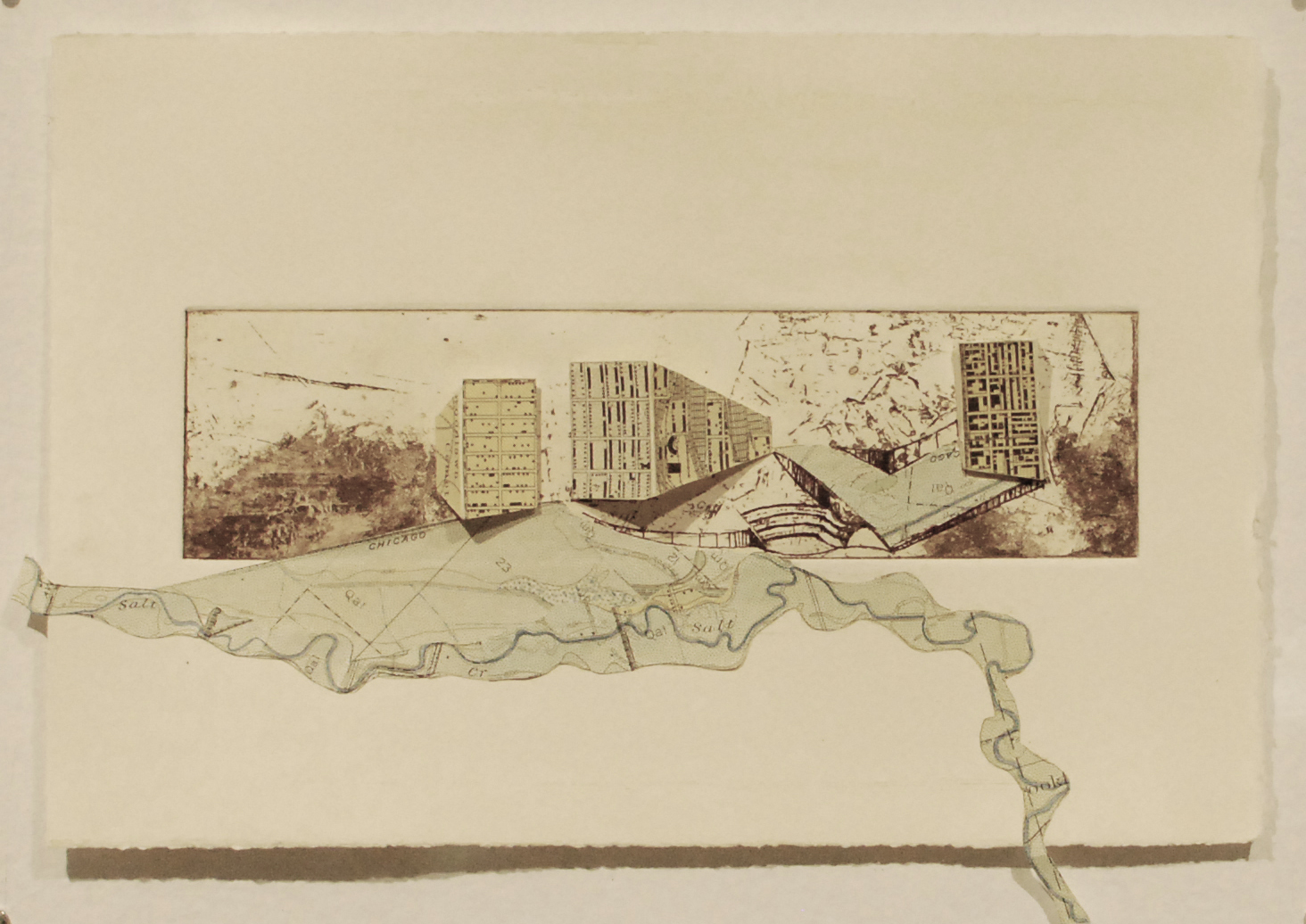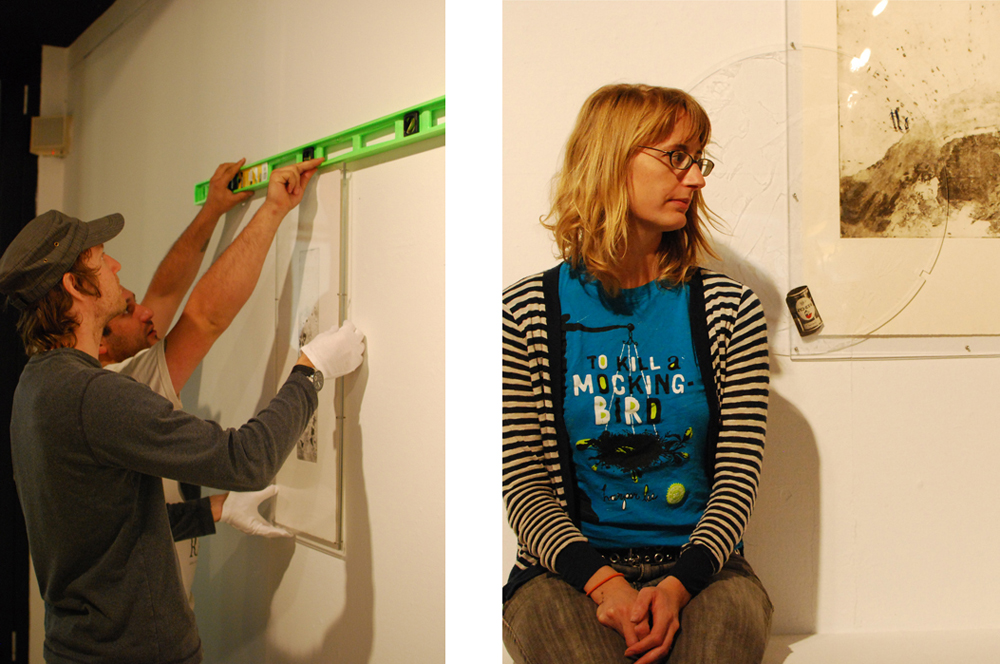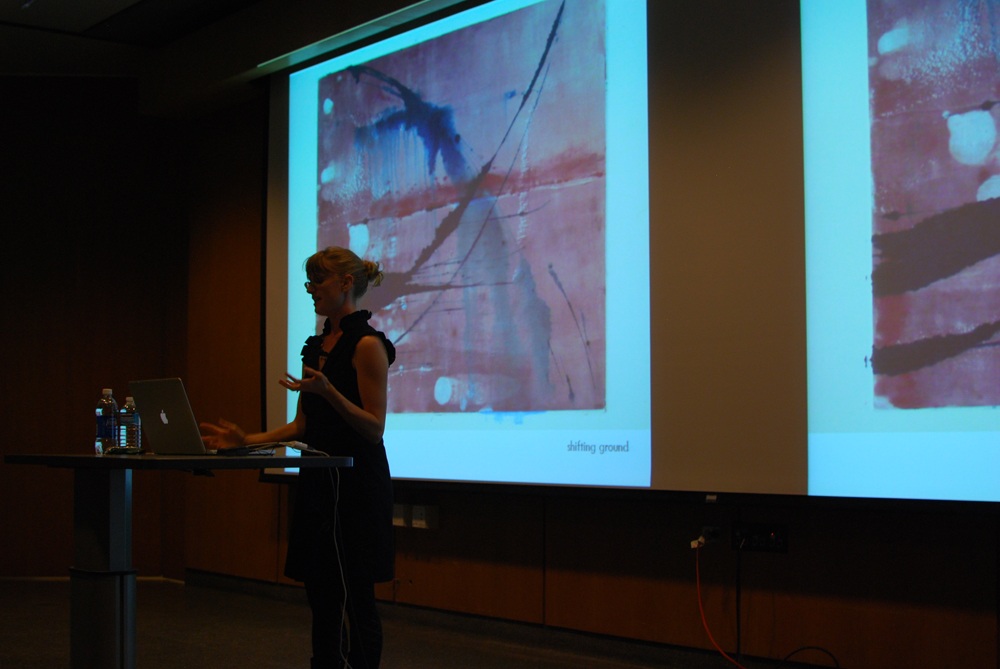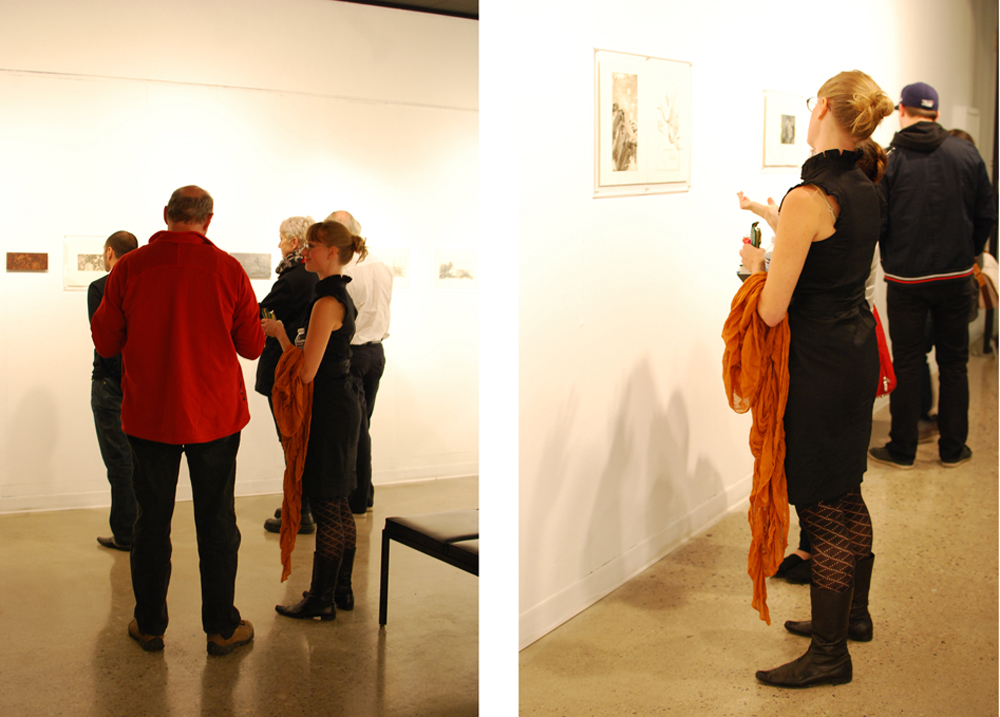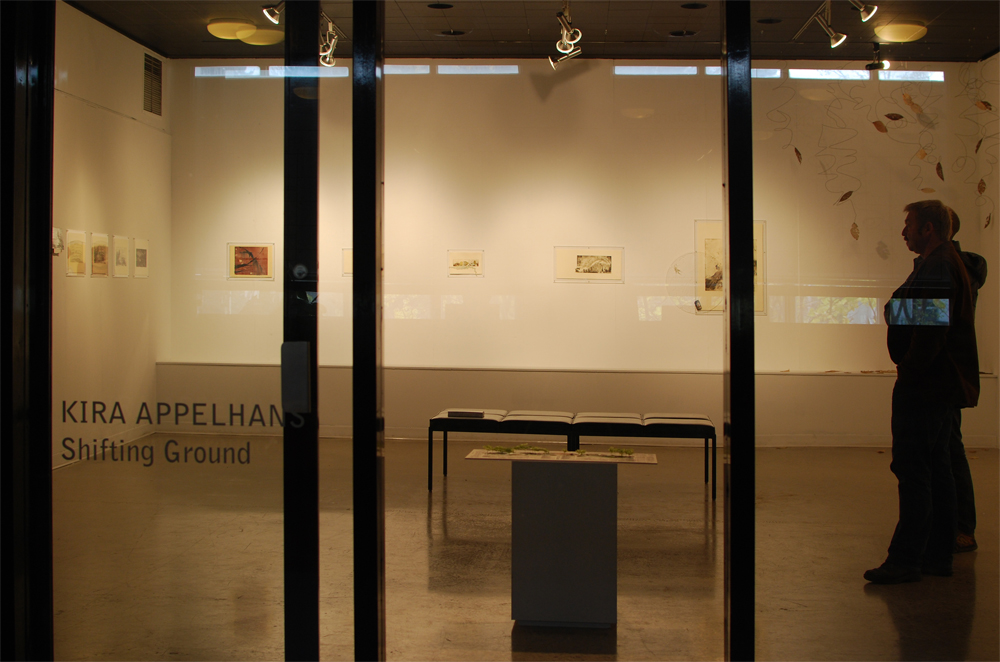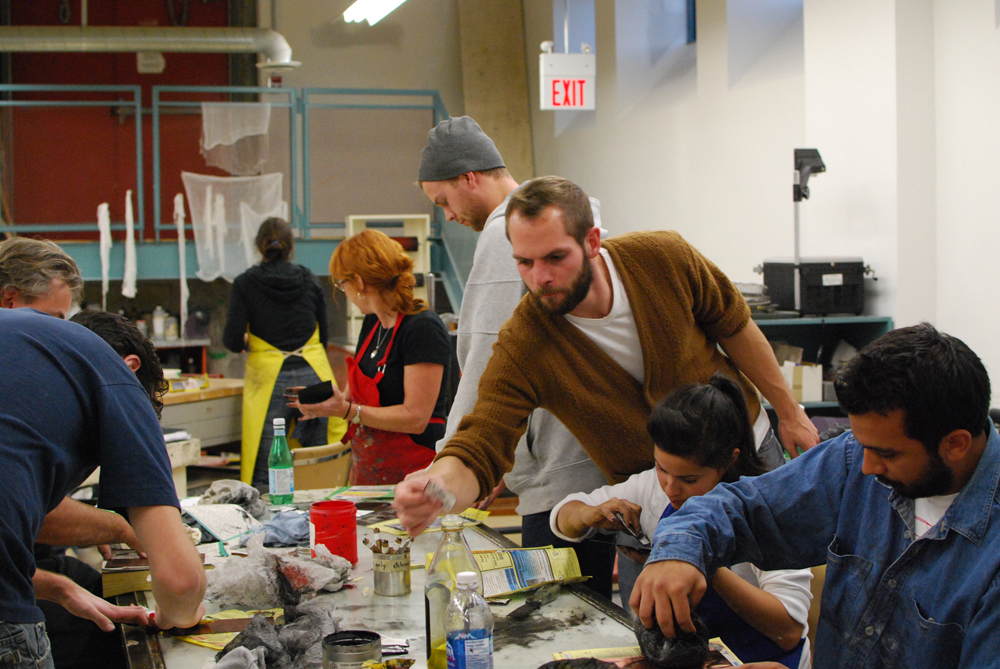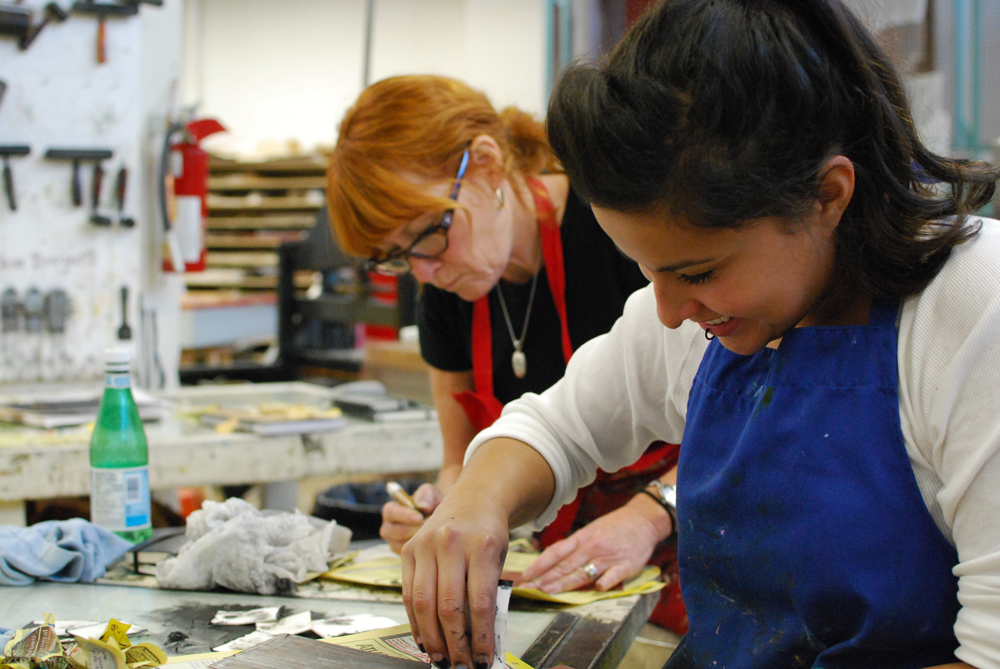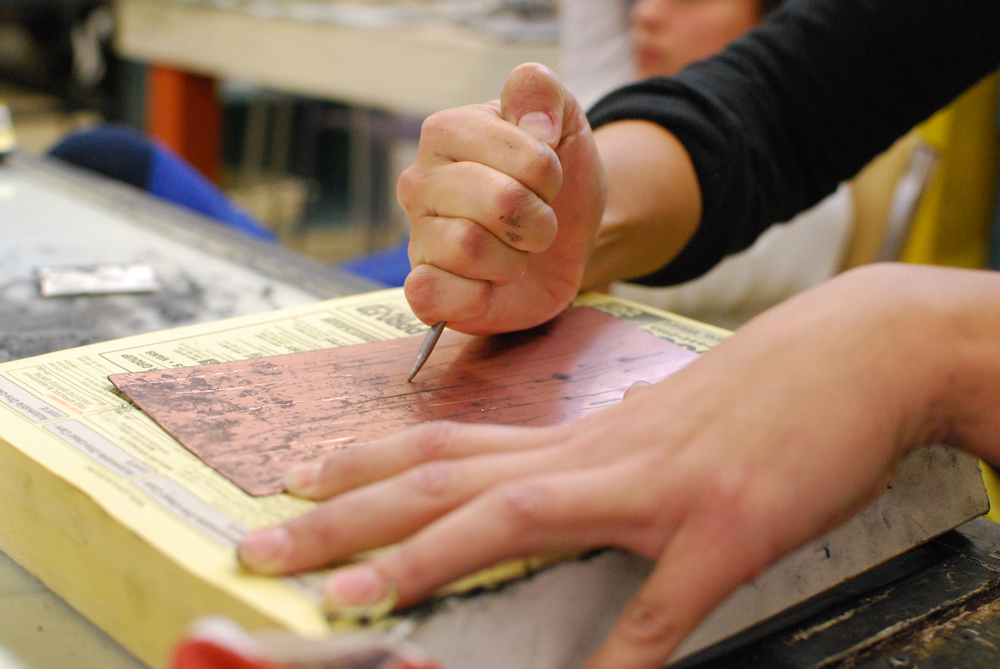The web is a fluid place. Â This interview lead to a several amazing opportunities for me but it’s original home on the web has disappeared so here it is again:
Originally posted  April, 2010 on Plan and Section
Can you tell us a bit about your professional journey from working in a landscape architecture firm to independently printmaking to being in the Moma?
Well, after grad school at the University of Pennsylvania, I took a bit of a break (which I recommend everyone do if possible) after which I started looking around for jobs.  I was intentionally not looking for work in New York City, but ended up finding an office there, Balmori Associates, that really interested me because they did a lot of conceptual yet sustainable work and I wanted to continue developing my conceptual design skills.
I worked there for just over three years and probably did 3-4 competitions a year as well as worked on a bunch of ‘real’ projects that were in various phases of development. My favorite of all the projects was the Bilbao Campa de los Ingleses. We won the competition for this project and I got to continue working on it all the way into construction documentation. I think the highlight of my time at Balmori was traveling to Spain to see the site for the Campa and meeting our client.
By the third year I had developed serious tendonitis in my elbows (too many hours on the computer) and was itchy to do things that didn’t involve sitting at a desk.  So at the height of the recession, going against common sense, I left Balmori Associates to move to Austin to teach a studio in the Masters of Lanscape Architecture program at UT and directly following that to an artist residency at the MacDowell Colony in New Hampshire.
Both of these new endeavors allowed me to take more time to explore different avenues of design and art. This happened most intensively at the artist residency where I spent six weeks making prints.  I had a lot of momentum coming out the residency and decided, in light of the current economic situation, to continue pursuing my own personal projects rather than fighting to get another desk job. Independent life is definitely less secure, but I am able to work on projects that really excite me like Rising Currents, a project commissioned by MOMA that I worked on during the fall and winter.
Can you tell us what the Rising Currents project is?
 Sure, the project was commissioned by MoMA’s Architecture and Design. The program for the project was very broad: address the issue of rising sea levels around New York’s upper harbor with soft infrastructure and program. There were 5 multi-disciplinary teams each assigned a different site around the harbor. We were in residence in PS1, we jokingly called ourselves ‘designers on display,’ for 10 weeks during which there were two open houses where the public was a to come in and comment on our progress.  A few weeks after our residency and after pulling a few all nighters, we submitted our drawings and models to MoMA. The work of all the teams is on display there until October 11, 2010.
Can you tell us about your role in Rising Currents and what your design strategy was for the project?
Rising Currents was set up so that teams of designers assembled by a ‘lead office.’ I was a member of the team, lead by Matthew Baird Architects. There were five main team members: three architects, an ecologist, and me, a landscape architect. We worked very collaboratively to develop the ideas and forms of the final project.  It helped that we were working together at PS1 for most of the time we were developing our proposal. Because the site was enormous and I was working with designers much more accustomed to 3,000 square feet rather than 1,200 acres, I got to lead a lot of the master plan/site design work, which was fun and pretty challenging.
Our site was Bayonne, NJ and the north shore of Staten Island, NY and I think is one of the more interesting/complicated because it includes an 100 + year old oil refinery covering about 800 acres as well as two gigantic — by that I mean 2 miles long and a quarter mile wide — man-made piers.
We began by looking at the global impact of a number of activities related to the site — shipping, oil refinery, waste transfer, CSO outflow– and then approached our ‘problem’ with the idea of transforming waste into ecologically productive strategies—developing a series of proposals that could work to create and protect habitat and protect the land from storm surge.
Can you give us some examples of those strategies?
Sure, there are a lot in the project but there are a couple that stand out and are what we focused on in our presentation.  The first is our proposal to take the glass from the region, which is currently shipped to Asia, to our site where we could recycle it into large glass jacks. The idea is that these jacks could be put into shallow waters surrounding the site and help create habitat on the denuded sea floor as well as act as wave breaks in the event of a storm surge.
The second example is our proposal to transform the oil refinery into a bio fuel plant that uses CSO, combined sewer overflow, to feed algae. The algae would then be processed into fuel and biomass that could be used as compost. The idea seemed crazy at first, but as we researched it we found that the company who owns the oil refinery in Bayonne is actually building a bio-fuel plant in Louisiana.
Because our entire project was based on this premise of transforming waste into beneficial products/systems that idea infiltrated almost every move we made. Another example is using the dredge from the bay to build a huge landform that protects the contaminated soil of the oil refinery from inundation in the event of a storm surge.
It was interesting because our strategy wasn’t based on a formal approach, so the forms in the project are the merging of our team’s different ideas/approaches to form.
Can you describe the inspiration and intent behind your printmaking?
 The inspiration for my prints comes from several places. One is the act of mark making on the plate. In traditional printmaking, the process is highly controlled and the results are quite predictable. But because I am not trying to produce a preconceived image, I work in a more experimental and uncontrolled way with the material. This means breaking a lot of the rules but it also means that the images I make are more free and abstract.
The other is the idea of landscape and natural processes. Printmaking allows me to experiment and play through different processes, both organizational and ‘natural,’ in a short period of time — days rather than years.
Do you think there is a difference between being a designer and an artist and, if so, how are the differences manifested in your work?
I think to some extent there is a difference. For me, making art is a freer process. I try to plug into the creative side of my brain and just make, make, make. I try not to think too much or be too critical of what I am making and I let myself follow almost any whim that comes into my brain. This doesn’t mean I’m not making considered decisions about what I’m creating, but I try to keep from getting stuck and frustrated by working on several plates at a time. Or, if I get stuck on all of the plates I spend a few hours making mono-prints—prints without a plate that are made in a more painterly way. Because of this I am ridiculously prolific, but there is critical energy that builds when you just keep producing, and that is part of what drives my creativity and helps me see in a new way.
So in this way I think for me art is different. In design there is more getting stuck and having to work through problems. I think this mostly comes from the fact that in design you are often working with a defined site full of constraints and overlaid on that is a client or program that you have to fit into the site in a beautiful, original way. It is still profoundly creative, but rooted in reality in a way that art is often not.
I think that, to a certain extent, I am attracted to making art as an antithesis to the design process. I think that you can see, that in my work, I am dealing with similar processes and ideas but in my prints the resulting images are much looser than in my design work.
When making prints do you look at the paper in any way that is reminiscent of looking at a site, do you try to create a field condition on the print or is the process of making art removed from designing a landscape?
Actually, in the type of printmaking I do, which is called intaglio, I work on a metal plate. It is that rather than the paper that I work to create the images and which plays the part of the ‘site.’
The beginning of an intaglio print is a mirror like piece of polished copper plate.  It is much like the tabula rasa designers often long for. But a blank slate can be intimidating, so instead of thinking of it as a site, I think of it as the vessel for a process. Making the first marks is always the most difficult step, but when I have a defined process that I am playing out it helps me react to the images that evolve out of various moves made on the plate. It also helps give the image and process a sense of form and structure.
I definitely don’t think making art and designing a landscape are decidedly separate entities. At least not the way I make art. Both landscape architecture and printmaking deal with processes that are inherently dependent on time. It’s just that one is based in decades and the other in minutes. So as landscape architects, we design systems that can accept and survive time and nature’s improbable eventualities. Printmaking on the other hand allows me to, in a matter of days, create a series of images that are based on similar natural processes and which create the unexpected ethereal spaces.  The difficult part comes in the synthesis of the printed images into designs. I have been using the prints to develop installation/design ideas that revolve around evocative spatial conditions rather than dimensions or the traditional plan and section. It is slow going. Eventually though, I hope to install a series of landscapes/installations inspired by my prints either at a gallery, my parents house or a sculpture garden. We will see who comes through first.
How has practicing art influenced your design techniques?
That’s an interesting question. I would like to be able to say it has, but I’m not sure I can. I have been training to be a designer and then working as a designer for over 12 years and the more traditional processes of working through plan and model and montage are certainly more comfortable and more easily translatable than digging into a print for inspiration. Also, when I’m working with a group and under serious time constraints, as in Rising Currents, it is more efficient to stick to conventional working methods so that everyone can quickly understand my ideas.
I intend to do more competitions and personal design work this spring and summer and through those I going to continue exploring this new way of working. So we’ll see how that goes.
In which ways would you encourage landscape architects to incorporate analog techniques into digital representations?
I think the best strategy is to just play.  Often I produce the most interesting work when I’m messing around mentally going “hum I wonder what would happen if I did this?† So scan in sketches and CAD on top of them, print out renderings or plans and draw on top of them, makes models and scan them or build models in rhino, cut them out and collage on top of them. From that I think you could develop a body of work or collection of strategies for working between media that starts to blur the line.
I recently saw some work produced by Keith Kaseman’s studio at Columbia that was really starting to do this. The studio spent a week working with a Brazilian artist and produced some amazing models. The bases had been modeled in Rhino and cut out on the laser cutter. On top of these more structured forms, were beautiful, colorful, messy additions inspired by the artist.  Images here : http://www.faiscas.org/ssb2010-images/phase-i-imagination-vessels-workshop/
You have clearly been very creative in the recession and come out with great experiences, what advice would you give to other landscape architects wondering what to do in this market?
Well, if you are just out of school, pray. Just kidding, I think even new graduates can find interesting projects to work on. Most of the best opportunities I’ve gotten have also come from contacting professors from grad school. They continue to do interesting things and almost always know of some project or office looking for help. And if no one wants to hire you at the moment, invent your own project or enter competitions with your friends or make yourself a website.
Most important though, is to keep looking and creating even if you are not being paid. It will always help you when you do start working. And you never know what kind of opportunity will come knocking on your door—because I made a website and someone happened upon it, I just licensed a bunch of prints to be reproduced and sold to boutique interior design stores.

